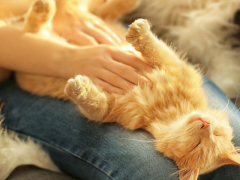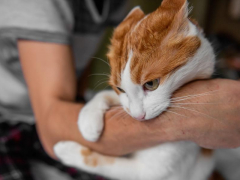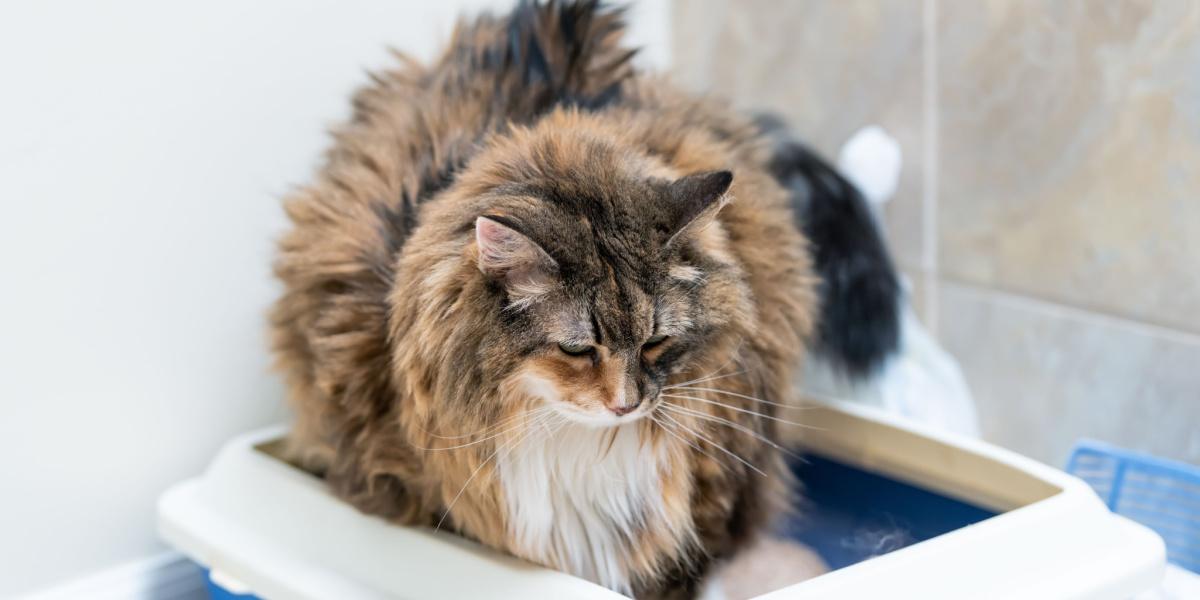
It’s not uncommon to find a cat in an unusual spot: a cardboard box that’s just a little too small for them, the top of a bookshelf, amongst your shoes in the bottom of the wardrobe…the list goes on. But if you keep finding your cat in their litter box, you may be wondering if this is just one of those odd-but-normal feline behaviors, or if should you be concerned.
The reasons behind this strange habit vary, with some more concerning than others. In this article, we will go through the most common reasons you may find your cat in their litter box, when you should be concerned, and how to help your kitty find a more appropriate place to hang out.
First, let’s go through the most common reasons for this strange feline behavior.
1. Medical Conditions
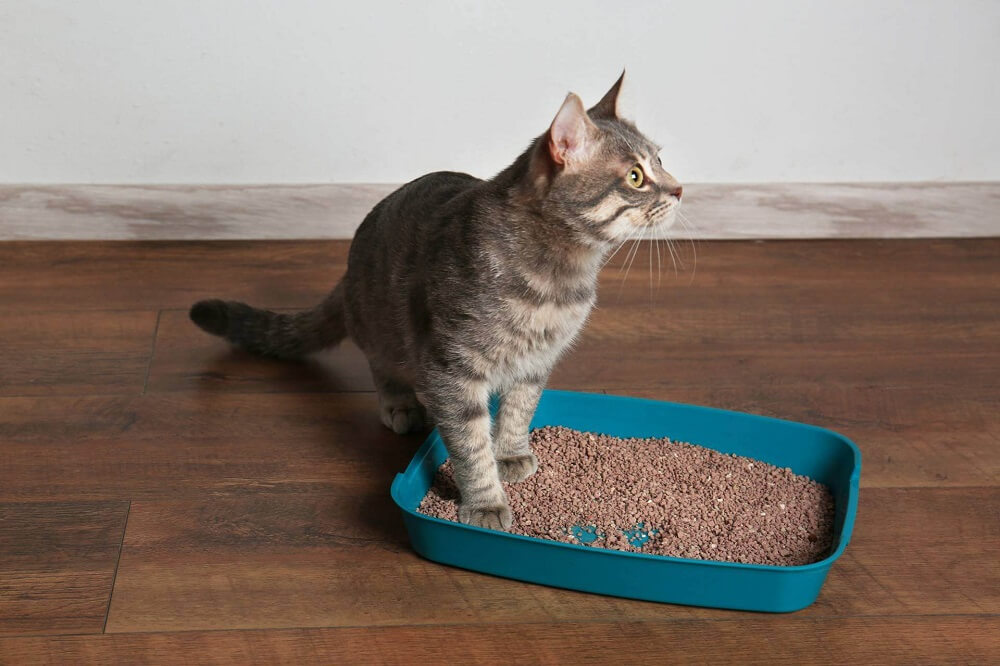
Make sure to look for other signs that your cat may be having difficulty in the litter box. It could be a medical issue that causes them to hang around it so much.
If you notice your cat sitting in litter box but not peeing and also spending an increased amount of time in the litter box, it may be a sign of ill health. There are many causes of bathroom problems in cats, and a trip to the vet is often required. Some of these problems can be very serious if left untreated.
- Urinary Issues
If your cat is in their litter box a lot, try and quietly observe them. Increased thirst and therefore increased frequency and amount of urination can indicate a condition such as kidney disease or kidney failure, diabetes, or hyperthyroidism.
Urinary tract infections (UTI) can cause pain during urination, straining to urinate, frequent urination, and bloody urine. Infection can also lead to inappropriate elimination in places other than the litter box, such as a carpet or bathmat.
Urinary blockage is a life threatening condition and you should consult with your vet as soon as possible or get your cat to see a vet in case there are not available for a phone call.
Also Read: Urethral Obstruction In Cats: Causes, Symptoms & Treatment
Feline lower urinary tract disease (FLUTD) is a term for various conditions of the urinary tract in cats, causing painful, frequent urination, straining to urinate, vocalizing when urinating, and licking of the genital area.
Causes include crystals in the urine which can form bladder stones or kidney stones, or get lodged in the urinary tract and cause a blockage. Urinary obstruction is more common in male cats than females and is a medical emergency. If your cat is straining to urinate but not passing any urine, seek veterinary attention immediately.
Also Read: Blood In Cat Urine (Hematuria): Causes, Symptoms, & Treatment
- Gastrointestinal Issues
If your cat is having tummy problems, they may be spending more time than usual in the litter box. The usual culprit is if they are having problems with defecation – either constipation or diarrhea.
If your cat is well, you may opt to monitor them carefully and feed them a bland diet with plenty of water. If the problem persists, or your cat seems lethargic, is vomiting, or is generally unwell, seek veterinary attention.
2. Litter Problems
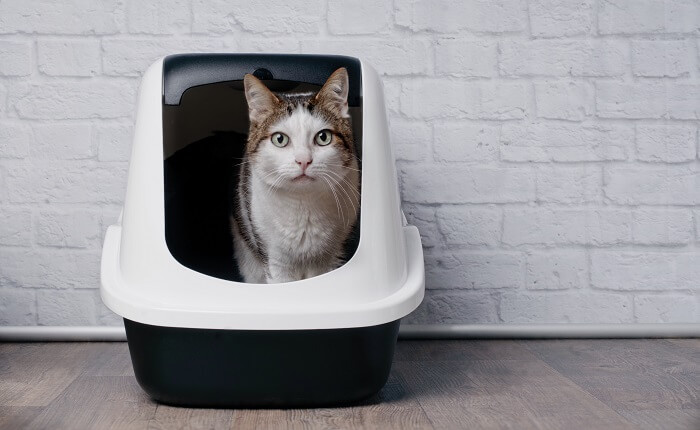
Cats can be very sensitive to change, including a change of litter, causing them to hang out where they toilet.
Fussiness is not an unusual trait in cats. There are many different types of litter – from wheat to pine to clay – and it may not seem a big deal to you to switch types or brands if you need to. However, your cat may resent a change to their type of litter, and this may cause them to spend more time in the litter box.
If the litter type is different – for example, if you move to a clumping litter – your cat may spend more time than usual testing out the texture and feel with their paws before using it as their bathroom.
Cats may also protest if the cat litter is not changed regularly enough. You might expect dirty litter would put them off spending much time in the litter tray (or at least that the pungent odor would), but actually, your cat may spend more time in the tray becuase they are trying to find a clean area to toilet in.
Also Read: Why Does My Cat Scratch The Sides Of The Litter Box
3. Play
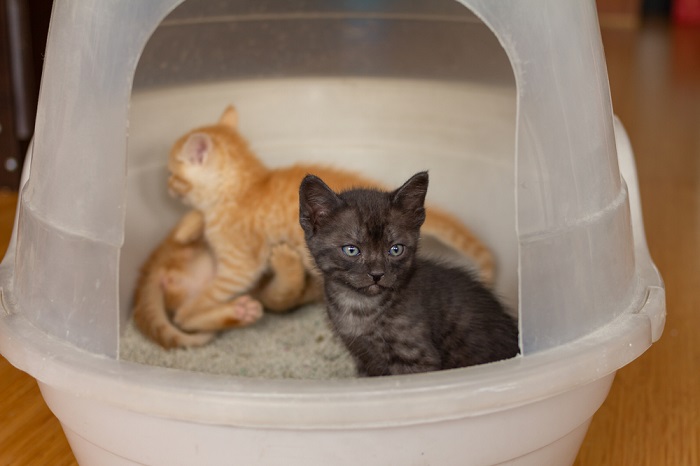
Kittens and some older cats like to check out something new and novel – like a new litter box!
This is probably not the answer you were expecting, but some cats – mainly kittens – are still learning about the world and use some objects not quite in the way that they were intended to be used. Litter boxes are fascinating to some cats, with their different scents, the texture of the litter, and the feel of the tray.
Some kittens explore these areas by playing or even sleeping in the litter box. If a cat hasn’t found a suitable snoozing spot in the home, they may choose the litter box as an alternative.
Also Read: When Will My Cat Stop Hissing at the New Kitten?
4. Territory
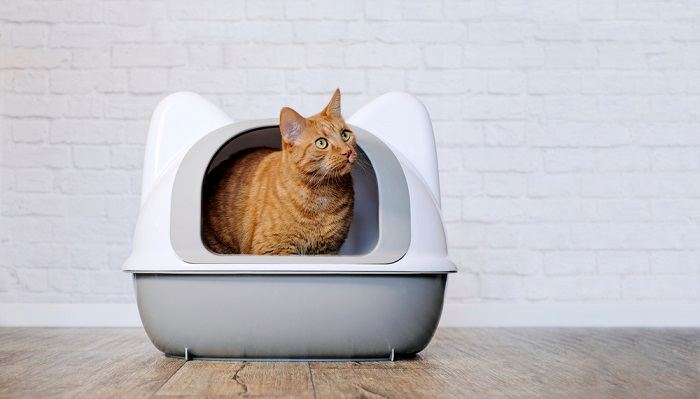
It is recommended that multi-cat houses have multiple litter boxes, as cats don’t like sharing them.
Felines are generally territorial, and our domestic cats will usually have their own areas inside your home. Using pheromone messaging and scent marking, they can designate certain areas as part of their territory, which will usually include a core area containing their food, water, bed, and litter tray.
If there is a territorial dispute with another cat causing anxiety, cats may choose to spend more time in their litter tray, either as a safe retreat from a perceived threat, or to re-establish it as their own using urine marking. This is why houses with multiple cats are recommended to have multiple litter trays, as cats don’t like to share resources.
Also Read: How Do Cats Mark Their Territory?
5. Old Age
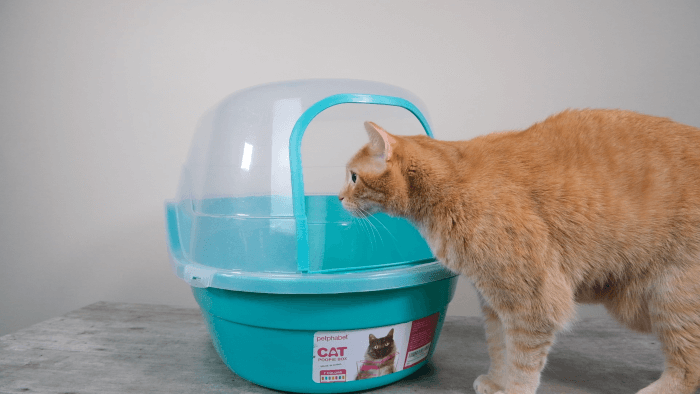
For some cats, the litter box is a familiar, safe place, making it a tempting place to hang out when stressed.
As cats get older, their habits and behavior can change. They may develop arthritis, causing them to have problems getting in and out of the litter box. When you see an older cat spending more time in their litter box, they might well just be stuck! Old age can also bring with it some degree of cognitive decline.
This can lead to older cats becoming forgetful, changing their routines, sleeping in odd places such as litter trays, and changing their interactions with their owners. If you have an older feline who has altered their behavior, habits, or routine, consider a check-up with a veterinarian to rule out any medical issues.
Also Read: 5 Easy Tricks to Teach Your Cat According to a Cat Behaviorist
6. Hiding Spot
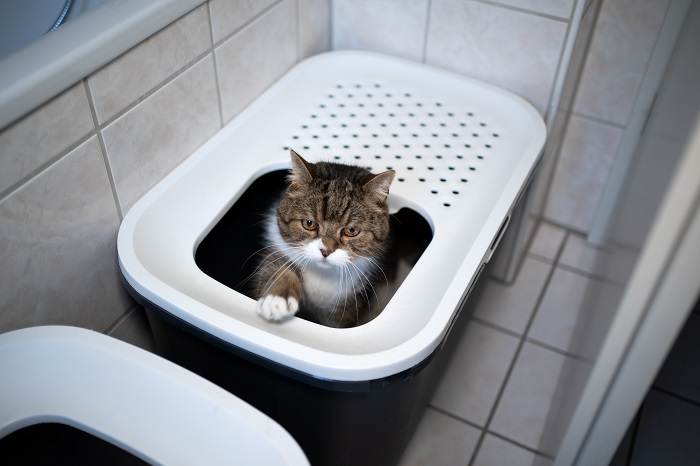
Cats like hiding away in dark, covered spaces when they feel stress.
Cats can be very sensitive, and many are prone to anxiety. There are lots of causes of stress for cats: adding a new pet to the household, a house move, a change to their usual routines, or construction work causing loud noises, to name a few.
Your cat’s behavior may change if they are suffering from anxiety, and they will commonly seek out a safe place to hide. For some, this may be under a bed or behind the furniture. For others, it may be the litter box.
New cats adopted into a household may choose the litter box as the safest place to hide because it is the only familiar-smelling object in their new environment. Scent is very important to cats. A litter box with a hood may be especially attractive as a hiding place as cats will seek out small, dark, and covered areas to take refuge in.
Also Read: How To Make Your Cat Love You Even More [8 Ways]
When To Worry And How To Help
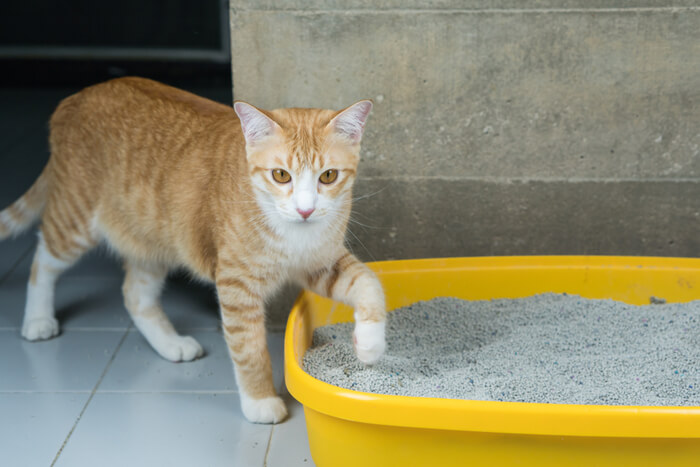
If you suspect your cat is using the litter box as a safe hiding place, try to make them a new spot, filled with their necessities and familiar things.
As we can see, there are lots of different reasons why your cat may be hiding out in the litter box. The main signs to look out for are if your kitty is unwell or in distress. Scratching around in the litter, desperately trying to pee, or only producing tiny amounts of urine is a sign that your cat needs urgent veterinary attention. Profuse diarrhea, or struggling to defecate may also be signs requiring professional help.
If your cat is passing normal bathroom movements, has a good appetite, and has no signs of ill health, then their love of the litterbox may be more behavioral. Make sure the litter type is kept consistent, and keep the tray as clean as you can. Providing more than one litter tray per cat is also a good idea so that there is no competition for this resource. You may want to try some different types of litter boxes.
Anxious cats who are hiding away in their litter tray may benefit from calming pheromone diffusers and a ‘safe zone’ set up for them with all their key resources: bed, food and water, a litter tray, and some toys. Give lots of reassurance and safe places for them to hide away.
Also Read: 5 Best High-Sided Litter Boxes For Messy Cats


